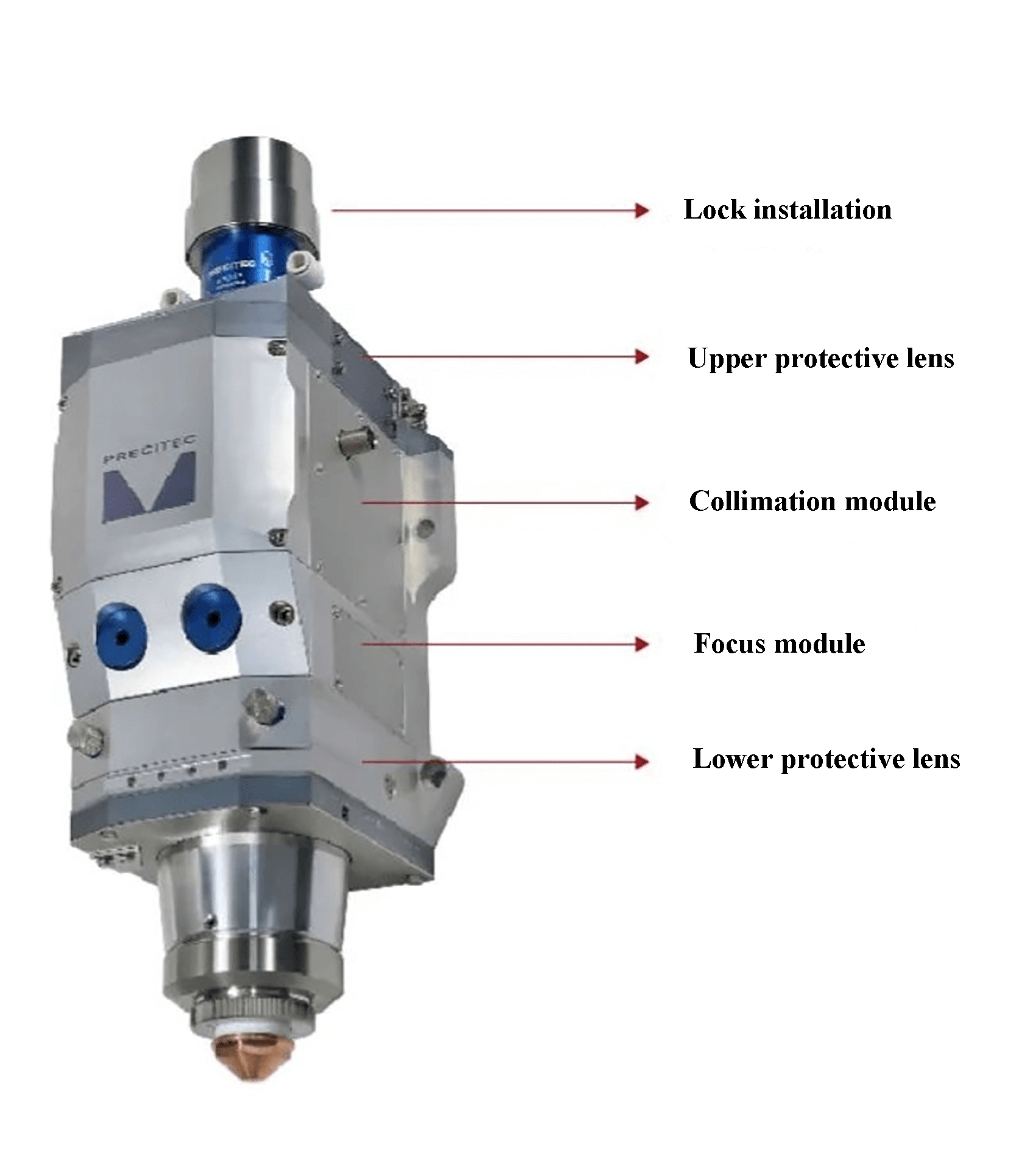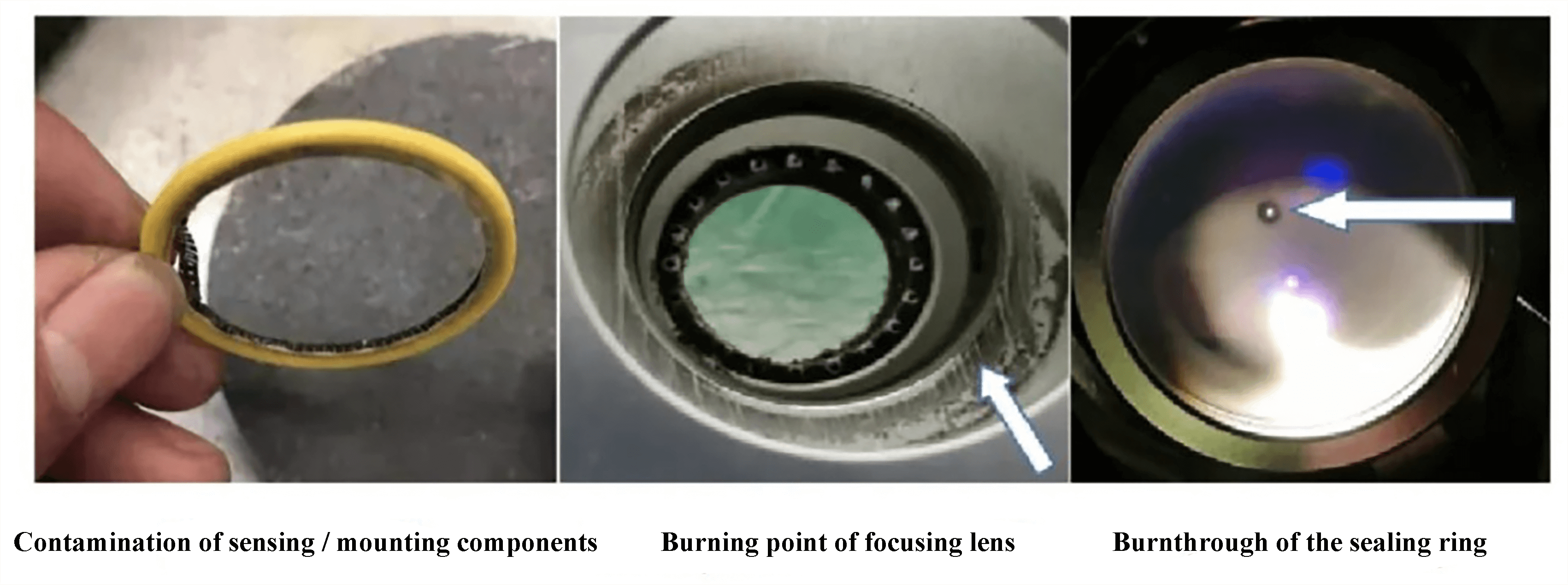The cutting head of a laser cutting machine operates in a harsh environment and requires protection for its internal components, especially the more expensive ones such as the collimator and focusing lens. To achieve this, upper and lower protective lenses are installed on the cutting head.
During the cutting process, dust and spatter produced on the workpiece surface can cause serious damage to the focusing lens if it enters the cutting head. The lower protective lens helps prevent this by blocking these particles.
Cleaning the protective lens is essential for the performance and quality of the laser cutting machine. If the lens becomes dirty, not only will the cutting effect and efficiency be affected, but it may also cause damage to the internal components of the cutting head and laser output head.
To obtain best results, it is important to use protective lenses made from materials with high light transmittance, low coefficients of thermal expansion and good durability. If the lens becomes dirty during processing, it must be cleaned or replaced.

Fig. 1 Laser cutting head
Protective lens processing has specific requirements regarding the selection of base materials, precision, surface defects, coating, stability and mechanical properties such as specific gravity, brittleness, tensile strength, compressive strength and hardness. These requirements are also evident in the processes of material preparation, waste folding, sand suspension, grinding, drilling and casing.
Only after rigorous quality inspection can finished products be considered ready for the market. Choosing common substrate materials and skipping the coating process in an effort to reduce costs can lead to low-quality lenses with low light transmittance, poor heat resistance, and a tendency to break easily. This can result in the lens bursting or breaking, releasing dust particles that can pollute the entire cutting head and cause damage to expensive components such as the focusing lens and sensor.
The maintenance cost to repair a damaged cutting head can reach 2-50% of the cost of a new one, causing delays in production and processing, leading to greater economic losses. To avoid these losses, it is recommended to purchase laser accessories from a reputable manufacturer through regular channels.
2. An adverse effects of poor quality lens protection
2.1 The thermal lens effect causes the cutting head to change focus
A poor quality protective lens can increase the laser absorptivity. After sustained exposure to laser light, the temperature will increase, causing thermal deformation and thermal lensing effect. This, in turn, leads to the cutting head's focus drift. The higher the power and processing of high-reflection materials, the faster the thermal expansion of the optical element and the more pronounced the thermal lens effect.
- When cutting stainless steel, the thermal lens effect can cause inconsistent cut sections, producing more and more slag and potentially making cutting impossible.
- When cutting carbon steel, the thermal lens effect can result in more and more slag at the bottom of the cut, making accurate cutting difficult.

Fig. 2 Thermal lens effect
2.2 Protective lens burning/burning point
An inferior, low-quality protective lens has limited ability to block dust and splashes during processing and is prone to causing fire. When processing with a 10,000 watt ultra-high power head, it is crucial to carefully select the protective lens. A poor quality lens can result in lens burn when exposed to the 10,000 watt laser in serious situations.

Fig. 3 Protective lens burning/burning point
2.3 Focus lens burn point
If the burnout of the protective lens is not detected in a timely manner, continuous laser processing will generate dust particles, which can contaminate the installation components, the sealing ring and the bottom surface of the focusing lens.
This may result in the formation of a burn spot on the surface of the focusing lens. In this case, it is necessary to thoroughly clean and replace the entire set of installation components and the focus lens module.

Fig. 4 Focus lens burn point
2.4 Laser output head burnout
If the protective lens burns out, the collimator and focusing lens module in the cutting head will be vulnerable to damage under the high-power laser.
In serious cases, if the internal optical elements of the cutting head are damaged, the optical path will become abnormal and the reflected light will cause excessive heating of the window part in the fiber laser output head, leading to burning of the QBH or LOE crystal. In this scenario, the entire laser output head must be replaced.

Fig. 5 Laser output head burnout
The use of low-quality protective lenses not only reduces the service life of the cutting head and leads to various accidents, but also negatively impacts processing progress and factory quality, resulting in increased processing costs and reduced cutting efficiency. factory.
Therefore, users are advised to purchase protective lenses only from reputable manufacturers and through reliable channels, in order to avoid significant losses and unsatisfactory gains.

























































